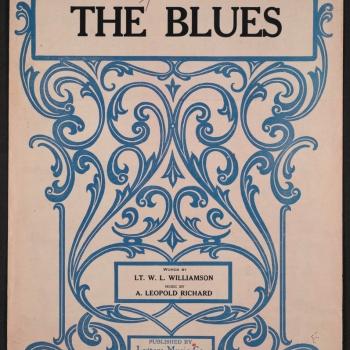I have been writing a series on the components of a sermon (see the last installment here), and I want to speak now about the element of argumentation.
Argumentation within a sermon seems clinical, academic, and just plain boring. Since the curse of much preaching is that it's boring, we should stay away from argumentation in preaching. We should excise everything remotely boring from our sermons. Let the words pop and sing and do rhythmic things in the moment. Anything that is, in the smallest way, academic or meaty must be culled out. We are after relating to people and touching their emotional nerve center. Right?
Well, Jesus certainly touched the hearts of those who heard him. He told stories that moved and inspired. Brilliantly.
However, he also argued his thoughts with logic (Matt. 12:35; Lk. 20:41-44) and of course with Scripture (Lk.20:34-38). He employed the Scripture to defend, prove, or advance his argument. This is what we mean by argumentation in preaching—not "being argumentative," but defending, proving or advancing a text of Scripture. We need to give our hearers the meat of the Word, and argumentation is one way in which we serve up the steak.
There are countless ways to argue. You can argue from nature, science, statistical data, everyday observations, or sheer logic. For the preacher, all of these are on the table. However, what makes us preachers different from other communicators is that we are not arguing stock truths or life principles. We are not even arguing biblical truths in general—we are arguing the specific truth of the Bible itself, the truth embedded in the one text from which we are preaching. This is more precise than extracting truths from the Scripture; it is taking the argument of a specific text and making it our own.
So, if argumentation is critical to effective communication, and we are communicating Scripture, how do we convey the argument within the biblical text? We have many tools at our disposal, but for sake of brevity, let me fire just one bullet. The preacher argues the meaning of a text by finding out how this text fits into the whole of Scripture. A few practical points will illuminate what this means.
1. Move away from the text.
If I were to walk you through my childhood home, you would understand its internal structure—the internal frame of the house. If however, we were to look at it on a satellite photo, you would see how that house is framed in the larger context of the community. This is the external frame.
Preachers so often look for meaning in the internal structure; they look so closely at the text that they lose the context. Our theology of the Word demands that we see the structure of the text as an inspired organic whole. Each chosen text for preaching is a part of a larger whole.
Right now I am fighting my way through the book of Hebrews. It is a tough book to preach, primarily because of its dependence on imagery of the Old Testament sacrificial system. However, there is meaning there. So occasionally, I have to stop and slowly explain some OT concepts, or have my listeners examine those concepts for themselves, so they can understand these truths. The challenge is to do this without losing people. However, it would be impossible to reconstruct the argument of the biblical author if the congregation did not understand the Old Testament context that gives meaning and significance to what the author writes.
2. Pan Out
Perhaps the most inter-textual book of all the canonical books is the book of Revelation. It is very dependent on Old Testament concepts. But this is true of all the books of the New Testament. Psalms and Isaiah are among the most quoted OT books in the NT. It is hard, for example, to preach through Matthew without noting the numerous Messianic prophecies that are there.
We could isolate a text and preach it without reference to the OT backdrop. But why would we do that, when Matthew's point in the text is so often imbedded in the fuller canonical meaning? So, remember to pan out. Think of this text in its context, but then move out to show the people how this fits into the organic whole.
3. Stay the Course
While we are arguing Scripture from Scripture we face a big temptation. We may find ourselves moving away from the explanation of a particular text to preaching the concept that is in the text. This is nuanced, but it is very important. We are not preaching truths, we are preaching texts. So, when we argue a particular text, by referencing other texts, it is tempting to get off point.
However, we must be careful to argue from other texts only in such a way that points back to the text, not away from it. To press the map metaphor, we are showing them how an Old Testament road leads to a New Testament truth. The author intended it that way. If we rhetorically park on the road, they never see the connection. The road exits to serve the destinations. So, argue Scripture from Scripture, but stay the course with a single text.





